As Joe told the story; he was born on this date (25th December) in 1924. He freely admitted that did not know this for a fact, as he was, at the time, too young to remember. However, his parents/family informed him this was the case, and who are we to argue?
Joe was born in New York City; shortly thereafter traveling to the family home in Poughkeepsie, New York where he spent his childhood years.
It was in August of 1934 that Joe received his first toy soldiers. A huge box, as he described it, straight from W. Britains in England. Shortly thereafter; backyards, side-yards and living-room rugs became his miniature battlefields.
After graduating High School in 1943, Joe enlisted…
September (13th) 1943 marks Joe’s enlistment in the army. He spent 17 weeks training, at Camp Blanding in Florida followed by another 17 weeks at Fort Knox Kentucky. Here (Fort Knox) is where Joe’s long time interest in tanks and armor stood him well as he ‘roared around’ in tanks; a grand time, being crazy enough to enjoy it – as he described the experience. With his free time he had the chance to inspect some WWI relics and study some of the history of tanks. Training complete, and after a short leave Joe traveled to the west coast to join the 713th Tank Battalion. On to Hawaii and the Pacific; eventually setting out for Okinawa as part of the 713th Armored Flame-Throwing Tank Battalion…
It is Joe’s interest in and experience with tanks that brings us to the subject of this year’s birthday celebration:
Joe Morschauser’s tank models as produced by Scruby Miniatures
In addition to being a war gamer, Joe was also a modeler (and photographer), as such it is no surprise that Joe made his own tank models. From July 1963, we have a hint as to what is coming soon from Scruby Miniatures and Joe Morschauser:
By September 1963 we have the first advertisement (reproduced below) for some new WWI miniatures, including Joseph Morschauser’s tanks:
20MM Soldiers of the Great War 1914 – 1918
TANKS
Thanks to Joseph Morschauser, we can offer you WWI Tanks. These are British and French makes, and can be used for the Germans also, as mainly they used captured tanks during the later phases of the war.
- Mark IV (British, heavy) tank was armed with two 6-pound cannons and 4 machine guns; moved at a speed of 4 miles per hour
- The Whippet (British, medium) tank had one 6 pound cannon and 1 machine gun; moved at a speed of 6 miles per hour
- The little Renault (French) tank was really thin-skinned, armed with one machine gun; moved with a speed of 8 – 10 miles per hour. This tank was used in many theaters of action during the last phases of the war
Another of Joe’s tank models was a Carden-Loyd tankette.This was the first of Joe’s tank models to be produced by Scruby. First appearance in a Scruby catalog is in 1962.
Joe was planning a war game using Carden-Loyd tankettes as early as 1962.
Joe’s tank models were not fancy; they did, however, serve their purpose on the war game table.
The tank models and molds as pictured below are as they were when taken out of long term storage. Complete with damage (note missing guns, etc.), dust and decay. The models shown in Alison’s photos are the master models used by Jack Scuby to mold Morschauer’s tanks. The castings pictured were cast by Joe and sent to Jack for reproduction. The colored lines drawn on the models were used as a guide when cutting the RTV mold; these would be the part lines.
These molds were placed into mold blocks for casting. The mold blocks would hold the mold parts together while metal was poured and then cooled. An example of a Scruby mold block is pictured below. Top is the closed mold block, the lower is an open mold block. The masking tape in this photo demonstrates how additional pressure could be applied in a specific location when pouring; helping to reduce flash.
I’m not sure if (all of) these tanks will ever again see the light of production day. I do however, have a few ideas that would allow the models to be recreated, winding their way onto some game tables.
Joe also wrote about tanks and armored warfare. One such article appeared Jack Scruby’s War Game Digest in the winter of 1962
OLD TIME TANKS IN WAR GAMES
By Joe Morschauser
I have often wondered why there is such a separation between the modern and the Musket period war game. For some strange reason war gamers fight either Napoleonic or 1898 type musket games or are completely devoted to late WWII modern games. With the exception of one article by Tony Bath of England on 1930 period “modern” games, almost nothing has appeared in WGD or other war game literature on “between-the-wars” type war gaming. This I think is a crying shame.
The period extending from about 1920 to 1940 is loaded with exciting possibilities for war gamers. There were countless “little wars” during this span of time. The period was one of exciting experimentation in the use of armor and tanks and there was an almost obsessive desire on the part of all national commanders to avoid the trench slaughter that WWI had brought. Then too the depression of the 1930s put a brake on the designing and building of “big” heavy equipment so that most of these between-the-wars” wars were fought with small tanks, small guns and lots of the old musketry and guts of the pre-WWI days.
There is just no good reason why war garners should not re-fight: The Italian/Ethiopian War; The Spanish Civil War; The Russo/Japanese War of the early 1930s; The Grand Chaco War in South America between Paraguay and Uruguay; The Riff War of the French in North Africa against the Arab tribes, various British/Indian frontier actions; and The Sino-Japanese war which lead into WWII. Add to this the many “imaginary” wars one can dream up like a Franco-British war in Africa or a Russo-British war in India and the war gamer has found himself a huge span which is almost completely ignored but one which is loaded with wonderful possibilities. The period joins the wonderful uniform possibilities of the past like those of the French Legion or the “pith helmet British” with such exciting things as fast little tankettes, truck-borne infantry and even an occasional (though very ineffective) airplane of the ‘egg-crate” variety.
But it is the little experimental tanks of the period which really add the “dash” to the game. In most cases these tiny buggies had hardly the fighting strength of a good squad of infantry (which by the way could take care of them with grenades at close range). But these tanks or “tankettes” as they were called could dash around the battlefield, help scatter demoralized enemies or act as a mobile “pill box” at a critical road junction. The Vickers/Carden Loyd designed in 1928 by Sir John Carden is a typical example. Weighing only 2 1/2 tons, carrying armor no more than a third of an inch thick and mounting only a single heavy water-cooled machine gun, they were a far cry from the Tigers, Panthers or Stalins of WWII. But these tankettes were used by almost every major nation in the world — Russia, Japan, the Czechs, Poland, France, Italy, China, various South American countries and of course by Britain. Completely inadequate for “modern war” as we think of it today, they served with distinction in all the actions mentioned in the paragraph above.
The Bren Gun Carrier of WWII British infantry forces grew from the Vickers/Carden Loyd. Some of you probably have used some of these in your earlier war gaming days with Britians soldiers for that firm made a 54mm scale model of the BGC. What many probably don’t know or may not remember is that the Vickers/Carden Loyd tankette or machine gun carrier as it was also called, was also made by Britians, in miniature 54mm scale of course. However, since that particular model was discontinued, there has been nothing on the market for war gamers to use in “between the wars” wars. And this may well be the reason why war gamers ignore this period. One can get Tigers,
Panthers, Shermans and a variety of late WWII period tanks but no little tankettes.
I myself searched and searched for proper models to use with 20mm scale figures for a “between the wars” war I have had in mind for many years. Finally in complete frustration at the lack of any equipment (except the “off scale” Authenticast models which are not made any longer) I designed my own. I’m no great shakes as a designer or model-maker but I have managed to turn out an adequate “war ‘game” miniature in 20mm scale of the Vickers/Carden Loyd 1929 tankette. This particular model had head covers for the crew of two, thus it is a completely protected tank.
How does one “organize” such tanks in a “between the wars” war game? It’s not at all difficult if you use the Roster System of mounting your troops on trays. Each tankette is given the firepower of an infantry tray and of course fires its machine gun the same amount as an infantry tray or squad (or team as I call them). The Infantry can fight back at close range with grenades (destroying the tankette) and all heavy machine guns or other heavier weapons can destroy the tankette with a hit. Thus your tanks in such a game are not all-powerful (as they tend to be in a WII modern game once all anti-tank guns or weapons of the infantry are gone). This means of course that one does not send these little buggies racing into the teeth of a heavily-defended enemy infantry position without support. The tankettes are actually cavalry. They have speed (35mph) and firepower and shock power, but their speed and mobility, not their protection in armor, are their important points. And of course, like cavalry, they can battle each other with their fire-power for their heavy machine guns will cut through the armor, just as a carbine bullet will cut through a chasseur’s breastplate.
“Old time” tanks, meaning “between-the-wars” tanks used in war games can provide war gamer a with a lot of fun. I’m looking forward to an Anglo-French African war using the same. (French version of Carden Loyd was called the Cheniellette and was used as an “under fire’” supply tank as well as a recon. vehicle). The King’s African Rifles and the “Casablanca Zouaves”, each supported by tankettes may soon be fighting at Fashoda on the Nile. I suggest other war gamers might like to try similar actions with “Old Tine Tanks” in a “between-the-wars” war game.
Much more tell and share about Joseph Morschauser III. Another armor related article is just about wrapped up and my biographical work is proceeding nicely. I do not believe it will reach book length, but it is already far more than a thumbnail look at the life and works of Joseph Morschauser III.


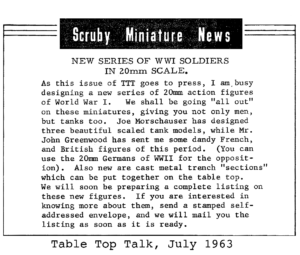
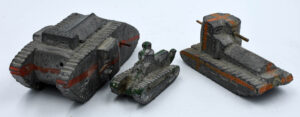
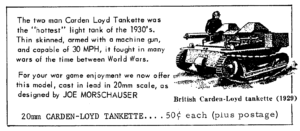
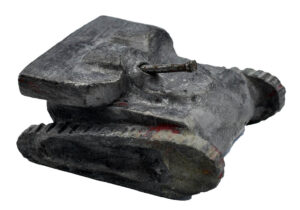
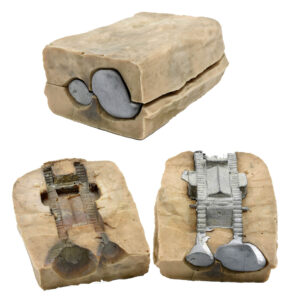
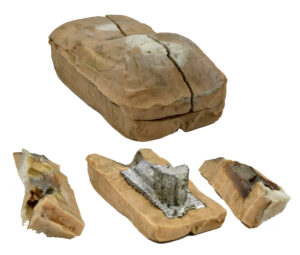
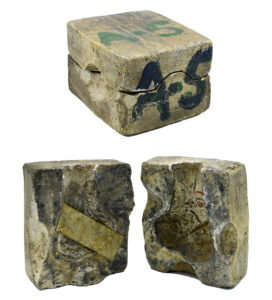
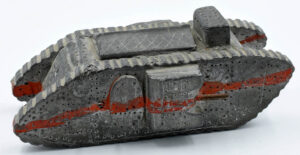
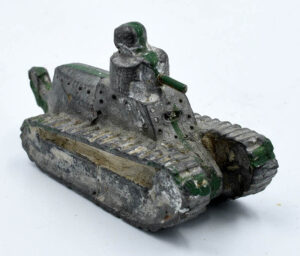
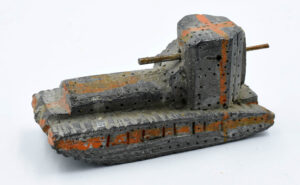
Great info. I’ve got 1 of Joe’s books in my library, and have referred to it a lot, as a matter of fact, this past week. Thanks for all the info about him. Never knew he was a model maker though. Tom Molon